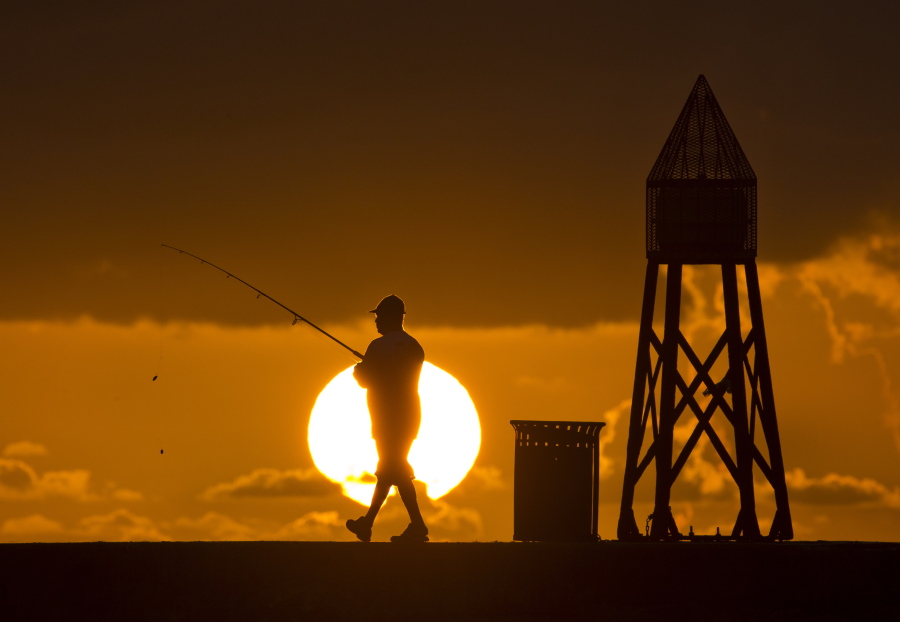As you open your eyes Sunday morning, have a big stretch and yawn the sleep away, the clocks will have sprung forward in the night, pulling the daylight into the evening for one hour longer.
Alas, the twice-yearly pendulum of the clocks continues, as if the 2019 signing of a Washington state law to make daylight saving time permanent and lock the clocks never happened.
But it did happen, didn’t it? So, what happened?
The 2019 effort of state lawmakers to make daylight saving time permanent in Washington is stuck in a yearslong wait in Congress, even with Gov. Jay Inslee’s signature on the legislation.
Congress needs to pass legislation allowing states to adopt permanent daylight saving time on their own. Federal law allows states to opt into standard time permanently, but adopting year-round daylight saving time requires congressional action.
Washington’s Sen. Patty Murray even sponsored the Sunshine Protection Act in 2022, which would make daylight saving permanent nationwide. Despite its success in the Senate and the wave of support particularly on the West Coast, the act sits, unmoving, in the House.
So, Washington state lawmakers took a different approach to ditch the switch this year with a bill to make Pacific Standard Time permanent in Washington, like in Hawaii and Arizona.
But the bill, Senate Bill 5795, sponsored by Sen. Mike Padden, R-Spokane Valley, and 12 other senators from both sides of the aisle, stalled in committee during this year’s packed 60-day legislative session, which ends Thursday.
Had it passed, Washington would have fallen back in November, and then after that, remained in standard time permanently — without Congress’ approval.
A shift to support permanent standard time
When we polled readers in 2022, we found that out of 1,000 responses, 72.4% of readers favored permanent standard time, which is what we’re switching from on Sunday and is observed November through March.
The support for permanent standard time is a major shift from 2019, when the momentum of public approval and bipartisan support in both the state House and the Senate resulted in Inslee’s (still stalled) permanent daylight time state law.
Kim Sundberg and Debby Clausen of San Juan Island told The Seattle Times in 2022 they prefer permanent standard time. They’re both retired biologists, and they try to structure their lives “by respecting natural seasons and cycles,” they said.
Experts agree that switching the clocks back and forth affects our health, but there’s no general consensus on which is best in the perennial debate between permanent daylight saving time or permanent standard time.
Daylight saving time advocates, like Steve Calandrillo, a University of Washington law professor, say more light in the evening prevents crime and saves lives by reducing car crashes.
Standard time advocates, including sleep experts like Dr. Nathaniel Watson, co-director of the UW Medicine Sleep Center and a professor of neurology at UW, say it more closely aligns with the alignment between the body clock and the sun clock.
Watson, who is also the director of the Harborview Medical Center Sleep Clinic, even said permanent daylight saving time is “akin to dosing the entire population with a permanent hour of jet lag.”
It would negatively impact population health across the board due to circadian misalignment, or the misalignment between the body clock and sun clock, he said.
According to Watson, the connection between our health and sunlight can be explained by recognizing three clocks — the sun clock, the body clock and the social clock.
Each of us has an internal body clock that regulates functions like hormone fluctuations and sleep. Our internal clock evolved to align with the sunrise and sunset in a 24-hour day, or the sun clock.
Our internal clock runs a little bit longer than 24 hours in most of us, but the sun steps in each morning help us out. Sunlight gently pulls us back into the 24-hour cycle of the sun clock by sending signals to specialized receptors in our eyes.
When the sun sets, the decrease in light signals to our body clock that it’s time to produce hormones such as melatonin, which promotes sleep.
Sunlight shapes our behavior, Watson said, and causes our body clock to function optimally in regards to our health and well-being.
When our daily schedule shifts by an hour on Sunday, the sun stays put — the natural relationship between our internal clock and the sun clock is disrupted, and the results are the negative effects on our health due to circadian misalignment, Watson said.



